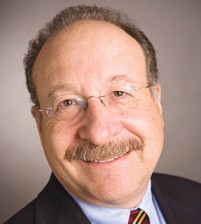Dubroff: Commuter rail on the Central Coast may put bullet train on track
IN THIS ARTICLE
- Columns Topic
- Henry Dubroff Author
By Henry Dubroff Friday, January 9th, 2015

Henry Dubroff
In a curious way, the path to California’s bullet train runs through the Central Coast.
The $98 billion project took its first step toward becoming a reality on Jan. 5 when Gov. Jerry Brown turned the first shovel of dirt. “It’s a long project, a bold project and one that will transform the Central Valley,” said the governor, who took the groundbreaking as an opportunity to push back at the project’s many detractors.
But the reality is that without the help of legislators whose districts are miles away from the bullet train’s tracks, the project will likely be stalled in the initial stage, which will run from Bakersfield to Merced.
To get closer to San Francisco and Los Angeles or to stretch to San Diego, the legislature and the feds will have to kick in an additional $30 billion, much of it drawn from the state’s cap-and-trade carbon taxes.
The federal government, which helped bankroll a 26-mile demonstration line that begins in Fresno, is unlikely to provide additional funds. House Majority Leader Kevin McCarthy, a Bakersfield Republican, is firmly opposed.
This in some ways puts the Central Coast delegation at the head of the train when it comes to transit funding. The quid pro quo might be more commuter rail for the Central Coast in exchange for support of the Central Valley’s high speed rail project.
During the past year, separate efforts led by Santa Barbara Chamber President Ken Oplinger and Sen. Hannah Beth Jackson have headed precisely in that direction. Now that the widening of Highway 101 to three lanes from Ventura through Santa Barbara is done or on the drawing board, commuter rail is one of the better options for managing the congestion that’s going to be inevitable.
For the Santa Maria Valley and Lompoc, increased commuter service represents one of the best ways to connect the growing populations in those cities to head-of-household jobs that are increasingly hard to fill in south Santa Barbara County.
In Ventura County, rebuilding the rail corridor from the Port of Hueneme through the Highway 126 corridor to Santa Clarita will likely be the best way to move large quantities of agricultural products to U.S. markets and will speed Central Valley and Heritage Valley citrus and other products through the port to foreign markets.
Rail is a much greener way to move agricultural products, and getting trucks off the highway is important if the governor’s goals for a reduced carbon footprint are going to be met. And the ability of rail to meet commuter’s needs, while not fully tested, is getting easier and easier thanks to technology.
Wi-fi has opened up a way for rail travelers to extend their workday or be more productive on the train. Uber and Lyft as well as bike-sharing programs have made it easier for workers to get to offices that are a bit farther than walking distance from the train station.
In a world that’s better networked by rail, the Burbank Airport, which sports a brand new multi-modal transportation center, would be more easily connected to the major cities of Ventura County.
There’s been a tendency for Central Coast residents to shrug their shoulders about the bullet train and its quirky conductor and move on. And, it is incredibly difficult to get all the players together, particularly the Union Pacific railroad, to provide track access for commuter trains.
But if high speed rail is going to become a reality for the Central Valley, the Central Coast should find a way to get its own rail program going.








